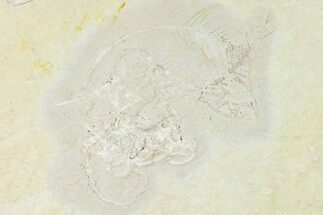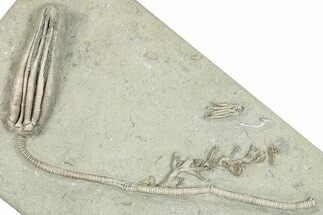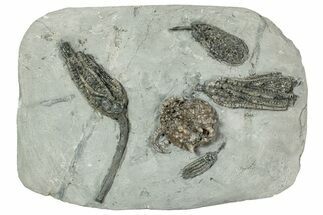This Specimen has been sold.
5.5x5" Decadocrinus Crinoid Association - Crawfordsville
This piece from the Ramp Creek Limestone of Indiana contains a pair of well preserved crinoid fossils. There is a 2.4" long crown of Decadocrinus tumidulus next to a specimen of Pachyiocrinus aequalis. It was collected from the famous Witherspoon Quarry near Crawfordsville, Indiana and prepared under microscope.
Crinoids are commonly known as sea lilies, though they are animals, not plants. They are echinoderms related to starfish, sea urchins, and brittle stars. They attached themselves to the sea floor and had feathery, tentacle-like appendages which they used to capture particles of food. First appearing in the Ordovician period, 488 million years ago, they still survive to this day in deep water.
Crinoids are commonly known as sea lilies, though they are animals, not plants. They are echinoderms related to starfish, sea urchins, and brittle stars. They attached themselves to the sea floor and had feathery, tentacle-like appendages which they used to capture particles of food. First appearing in the Ordovician period, 488 million years ago, they still survive to this day in deep water.
SPECIES
Decadocrinus tumidulus & Pachyiocrinus aequalis
LOCATION
Crawfordsville, Indiana
FORMATION
Ramp Creek Limestone
SIZE
Matrix 5.5x5", Decadocrinus 2.4"
CATEGORY
SUB CATEGORY
ITEM
#20845
We guarantee the authenticity of all of our specimens.
 Reviews
Reviews















